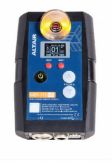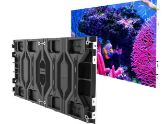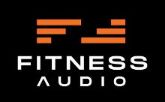
How to Choose the Right Speakers for Your Event or Party Sound System
Most people only notice sound when something goes wrong. Feedback squeals, muffled speeches, music that cuts out halfway through the first chorus of "September". The kind of thing that sticks in peoples' minds, and not for the right reasons.
Good sound doesn't just support an event, it shapes how people experience it. From making sure everyone hears the vows at a wedding to delivering crisp audio at a product launch, the right speakers are non-negotiable.
That's where we come in. At Edwards Sound Systems, we've spent years helping New Zealanders get their events sounding exactly how they should. Whether it's a sporting event or a race track, quiet gathering, wedding or funeral service, or a full-blown festival, we've got the sound gear and the knowledge to make it work.
You are hiring a sound system and the speakers make up a large part of that!
Key Factors to Consider
There's no one-size-fits-all speaker. What works in a hotel conference room won't cut it on a windy hillside or a beach. Before you hire anything, it pays to run through a few key questions:
What type of event is it?
Is it a wedding? A corporate seminar? A DJ or Band? A concert, or sporting event? Different events need different sound priorities. Speech-heavy events demand clarity. Music-focused events need full-range sound and solid bass response. Start with the format, and everything else follows.
Where is it happening?
Indoors, you're managing echoes and reflection. Outdoors, you're fighting wind, distance, and the sound just disappearing into the ether.
If it's a marquee the sound goes straight through the sides and on to the neighbours. Venue acoustics make a difference - more than you'd think - and bodies absorb sound too, hence the next question.
How many people are you expecting?
This one's easy to underestimate. A speaker that works for 30 people in a lounge won't hold up when you've got 150 people in a marquee. The larger the crowd, the more power and coverage you'll need. And did you know that to double the "volume" you need 4 times more power?
Speech or music or both?
If you're just doing speeches, a "standard" good quality PA will usually do - some good quality 2-way speakers on stands. But if there's a dance floor involved, you'll want subwoofers and speakers that can handle a bit more punch. It's not just about loudness, it's about clarity and coverage.
When speech and music is involved it's important to have the mid and high frequency speakers above the audiences' heads as those are the frequencies that are absorbed by meaty human bodies first and the message can become unintelligible if the speakers are sitting on the ground. That's why you find subwoofers on the ground and the high frequency boxes on top or above. Bass will largely get through the people with a little more power, but you'll lose the high frequency and have a muffled mess.
This isn't guesswork, we've helped hundreds of clients get it right. And yes, we're happy to talk you through the details if you're not quite sure where to start.
Speaker Types and Their Uses
You don't need a sound engineering degree to pick the right setup, but knowing a bit about the different speaker types can save you from hiring the wrong kit when putting together a sound system. Here's a breakdown of the most common options and where they shine:
PA Speakers
PA (public address) speakers are the go-to choice for clear, consistent sound in events that rely heavily on speech. Whether it's a wedding ceremony, business presentation, or a school production, these speakers are built to project voices cleanly and without distortion. They're reliable, flexible, and suitable for both indoor and outdoor use. If you need a solid all-rounder, a decent PA speaker setup will rarely let you down.
Active / Powered Speakers vs Passive Speakers
This is one of the more important distinctions when it comes to setup logistics. Powered (or active) speakers have their amplifier built in, meaning fewer separate components and quicker assembly. You plug in your audio source, power them up and you are good to go. Passive speakers on the other hand, require an external amplifier to function. While they offer more flexibility in larger or more complex setups, they involve more gear, more cabling, and more room for error if you're unfamiliar with how it all connects. For most small to mid-sized events, powered speakers tend to be the more convenient and foolproof option.
Subwoofers
If your event involves music, especially dance music or anything with a strong rhythm section, a subwoofer adds a significant layer of depth. These speakers are specfically designed to handle the low-frequency sounds that regular speakers can't deliver as effectively. Think basslines, kick drums, and that low-end presence you feel in your chest when the music's just right. While not necessary for every event, subwoofers are essential if you're aiming for a full-bodied, immersive sound with trouser-legs flapping.
Line Arrays
When you're dealing with large-scale events, such as outdoor festivals, live concerts, or corporate presentations in a larger venue, line arrays are the professional sound system solution. These are vertically stacked / hung speaker systems designed to distribute sound evenly across large areas, maintaining clarity and volume from the front row to the back. They're engineered to minimise distortion and ensure that the sound doesn't drop off sharply for those further from the stage.

These are a relatively new breakthrough from 2003 onwards - the physics and engineering to make a line array work properly is very complex and there are many vendors selling systems that are not properly coupling and with inaccurate DSP and dont work properly. When they do work properly they are fantastic - the sound pressure level can be double that of the same speakers if they weren't hung in an array (the "J" curve), and the sound quality pristine.
In an active line-array such as the DAS Event-28A, each speaker has a 650W RMS amplifier with high-tech custom built speaker components attached directly to it in a carefully designed and manufactured cabinet. The result is astonishing sound quality and sound pressure level.
Bluetooth and Portable Active Speakers
For smaller events where convenience is king, portable Active DAS Bluetooth speakers are a solid option. These systems are typically lightweight, easy to carry and require very little setup. They're idea for casual gatherings, breakout sessions, small meetings, or pop-up events where speed and flexibility are priorities. While they won't match the output of a full PA or powered system, they're more than capable of handling modest audio needs with minimal hassle.
They usually have an input for a microphone too so you can still use them for a presentation or speeches for smaller crowds or rooms.
Portable PA Systems
These are the self-contained power-houses used in schools, weddings, funerals and sports clubs all over NZ. They are battery powered and can cover hundreds of people indoors or outdoors in fields and courts.
Wireless Microphones are usually built in (handheld, lepel and headset types) and you can also add wireless extension (slave) speakers if needed.
Ideal for a remote wedding or ceremony on a beach, or a meeting and music where there is no AC power, the heavier ones have wheels built in for convenience and ease of transport.
See our Stage Pro, Apex and Focus portable PA systems for hire
Outdoor Horn Speakers
When you have a large outdoor area and need to communicate clearly these are the efficient way to do it.
Best suited for commentary, buzzer and scoring information and crowd control just two horrn speakers and a 100 watt amplifier will cover a footy field. The other advantage with these is that long speaker cable runs are fine - hundreds of metres without loss of output power, and you can link from one speaker to the next without worrying too much about the impedance as you do with 8ohm speaker systems.
They are the right tool for the job in a lot of instances, particularly when you don't need loud music to be played and it is conveying information across large open areas. they do sound a bit "tinny" with music playback because they are simply not designed to provide any bass.
Ideal for sports fields, parks and beaches, school fields and paygrounds, carparks and race courses etc...
If you're still not sure which speaker type fits your event best, we've detailed more specs, use cases, and hire options over on our sound system hire page. Or, just give us a call - we'll walk you through it.
Indoor vs Outdoor Considerations
Outdoor

In outdoor settings, sound doesn't have surfaces to bounce off, so it disperses quickly. You'll need speakers with strong projection to carry over open areas, especially if you're working with a larger crowd. Wind can also interfere with sound direction, so placement and coverage matter more than people often expect.
Access to power is another big one. No mains nearby? You'll need battery powered or generator friendly systems. And of course, there's the weather. Rain and electronics don't mix, and even strong sun can cause problems if your gear's not protected. Outdoor setups need to be durable, weather-aware and flexible.
Indoors

Inside you're managing echoes and sound reflection. Hard floors and bare walls bounce sound around, while carpet and curtains soak it up. Speaker placement is key - keep them off the floor and away from corners to avoid muffled or uneven sound. Indoor venues may feel more controlled, but they still need a properly planned setup to sound their best.
Matching Speakers to Your Event Size
There's a fine line between "not quite loud enough" and "the walls are moving and ceiling tiles coming down". Choosing the right speakers isn't about overkill, it's about matching the sound system to the size and style of your event.
Here's a quick guide:
- Small Events (under 100 people): For intimate gatherings like birthday, engagement parties, or company meetings, compact PA systems or portable Vantec Active Bluetooth speakers usually do the trick. They are easy to set up, don't need much power and provide clean, clear audio without taking over the space. But keep in mind your venue will dictate the requirements. You'll find sold options on our PA system hire page.
- Medium Events (under 250 people): At this size, you need a bit more punch. Powered speakers give you the coverage and volume you need, and pairing them with a subwoofer ensures music sounds full-bodied rather than flat. Great for weddings, dance floors and community events, and are reliable and very easy to set up.
- Large Events (250+people - to as many as you can!): Now you're into serious territory. Line array systems or multi-speaker setups ensure even sound coverage without deafening those at the front. Perfect for festivals, large conferences, and open-air events where sound needs ot reach far and wide -- and actually be heard when it gets there.
- Outdoor Sports Events: This situation is where the area to be covered rather than the number of people attending is more relevant. Usually it is commentary, buzzers, scoring and instructional information being broadcast so more efficient "Horn Speakers" are used. Excellent efficiency and wide area coverage for voice, but not designed for music.
Additional Equipment You Might Need
Speakers are only part of the puzzle. A great sound system involves a few more pieces that keep things running smoothly and sounding sharp.
- Microphones: Whether it's a vocal mic for a singer, wired mic for a wedding MC, a wireless microphone for a roaming presenter, or a lapel mic for hands-free speeches, choosing the right microphone matters. The right mic will cut through background noise and keep things sounding crisp.
- Mixers: If you've got more than one audio source - think microphone, laptop playlist, live instruments - a mixer will help you balance levels and avoid the classic "why is this so loud suddenly?" moment. They're easy to use, and we are happy to show you how.
- Speaker Stands and Placement: Speakers sound best when they're at the right height and properly aimed. Floor level speakers don't sound right and the mesage rarely travels well. Stands improve projection and keep things tidy, especially in crowded spaces.
- Cables, Power and Setup Essentials: It's the boring stuff but it's essential. From power leads and audio cables to adapters and extension cords, we make sure you've got everything you need. We even label things so you know what plugs in where, no guesswork involved.
Why Hire from Edwards Sound Systems?
Hiring speakers for an event shouldn't feel like you're stepping into a tech support call. At Edwards Sound, we make it easy.
- Our range covers everything from battery powered portable PA systems with wireless microphones to concert-grade line arrays. Whether you're planning a small function or a large event, our equipment is tested, maintained and ready to go.
- We're not just here to hand over gear. Our team offers practical advice based on experience, not guesswork. We'll help you figure out what you need, explain how it works, and even handle the set up and operation if you'd rather not deal with cables and knobs on the day.
- Hiring from us is flexible, we deliver across Auckland and the greater area and tailor each hire to suit your schedule and venue. If something goes wrong mid-event (it happens when you have humans involved), you'll get real support, from real people, fast.
From start to finish, we make sure your event sound the way it should, clear, confident and completely stress-free.
Upgrade your Event Today
Sorting out sound to hire for your event doesn't need to be complicated. The key is understanding your space, audience size, and the type of audio you'll be using, and matching your speakers to that.
At Edwards Sound Systems, we help you cut through the noise, quite literally. With expert advice, quality hire gear, and straightforward hire options, you can focus on hosting while we handle the technical bits.
Browse our speaker hire options or get in touch - we'll help you sound good, no matter the size of your crows or venue.























































casino en ligne
You revealed it superbly.
casino en ligne France
Thanks. A lot of information.
meilleur casino en ligne
Nicely put, With thanks!
casino en ligne
You said it very well..
casino en ligne
Thank you, I like it.
casino en ligne francais
Cheers. Lots of facts!
casino en ligne
You've made the point.
casino en ligne
Appreciate it. Ample forum posts.
casino en ligne
You suggested it terrifically.
casino en ligne fiable